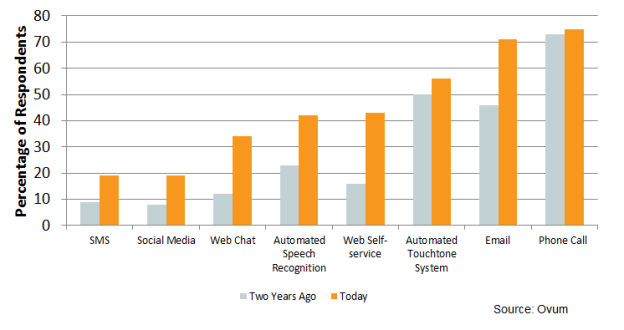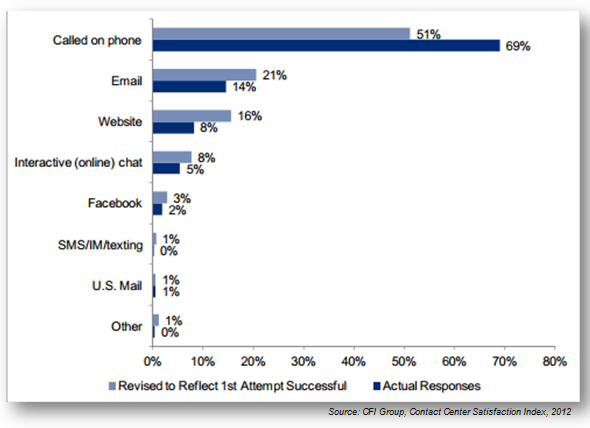As 2013 winds down, I’ve been reflecting about what we’ve seen change with customer care over the course of the year that will have impacts into 2014. Over the next few weeks I’ll share three best practices that have gained traction and relevance this year and I expect to continue into 2014.
The first best practice: offer your customers choices.
It’s been talked about so much that it’s getting a bit tiresome: it’s hard to earn a customer’s loyalty. Sometimes the truth is tiresome. It’s a competitive world out there. Customers can easily choose someone else to do business with.
The explosion of smartphone usage has created an environment where customers have a huge number of communication choices in their everyday life: Voice? Email? Chat? SMS? Facebook? Google+? Twitter? Blogging?
What do they choose? It depends on their age, their comfort with new communication channels like social media, and the purpose of the message. I’m sure within the past 2 years you’ve added or increased your usage of one of these channels.
Guess what – customers are developing preferences for non-voice channels. These preferences are driving higher adoption of lower-cost non-voice channels. Don’t wait – it’s time to offer your customers choices to connect with you. Take a look at this Ovum graph from a study last year. While you were texting or Facebooking more often, you weren’t alone! These statistics relate to using these channels to communicate with companies on matters related to service/business:

Customers want more choices and they are changing their behavior. Not offering choices can be interpreted by customers as more than an inconvenience – it can be construed as not valuing their business. “Seventy-one percent of consumers agree: ‘Valuing my time is the most important thing a company can do to provide me with good customer service.’” This is from the North American Technographics® Customer Experience Online Survey, Q4 2012.
Enough of the scary stuff!
It’s a lot of work to add channels. Even if your contact center technology can easily accommodate multi-channel, adapting and creating new policies and procedures can seem daunting. Is it worth it? You might be wondering, “If I add channels will I just be wasting time?”
No. In fact, customers adapt quickly to alternate channels if they have a good experience. Check out this result from CFI’s 2012 Contact Center Satisfaction Index:

The dark line is what customers actually did when they needed to resolve a service issue. CFI asked a great follow-up question: If you knew that the first attempt would be successful, what channel would you choose? Look at the change! Add those channels, promote them, and your customers will quickly adapt. If you’re concerned about how to get started, we’ve got some ideas and resources you might be interested in: “Get Started with Multichannel.”




